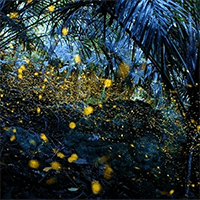- Age 6~Age 99
- Within 1 hour
- 10:00
A giant tomato robot supports high-tech sorting! Komatsu tomatoes boast the largest production volume in the Hokuriku region. It is rare for farmers to go directly to the market, and they are shipped after being checked for size, color, shape, etc. in between by a sorting field. The fruit is sorted at a large-scale sorting facility that just opened in May 2021. In this program, you can observe how the fruits are sorted smoothly using state-of-the-art machines. Komatsu and Matsutsuki for souvenirs! It is also recommended to participate continuously with Honda Farm. It should be an interesting experience to take a peek at the flow from the production site to the distribution! ~ Flow of the day ~ Observation of the process from sorting to packing about 45 minutes * For foreign nationals: Information on the day will be in Japanese only.
- Age 15~Age 100
- 3~4 hours
- 13:30
Luxury stool making experience taught by furniture craftsmen and upholsterers LEON is a furniture studio that proposes, manufactures, delivers, installs, and even maintains furniture and living tools, based on the concept of "solid wood furniture that can be used for a long time." . AMANO is a chair upholstery workshop that reupholsters chairs and sofas, offering the idea of ``fixing and reusing.'' In this program, two such cooperative workshops have teamed up. After a tour and explanation of the workshop and gallery, you can create a stool that you can customize to your liking, including the wood species and fabric of the chair. Take your time to see, hear, touch, and experience the details of each product.
- Age 12~Age 100
- Within 1 hour
- 10:00 / 13:00 / 15:00
Time to face the once-in-a-lifetime wood that comes to the workshop after an eternity After graduating from university, he learned the technique of turning wood in the mountains of Kaga City, next door to Komatsu, and is currently working as a lacquer artist in Komatsu City. Ms. Fumiko Iku is a woodturner who manufactures products. In this program, you can experience making wooden bowls at Mr. Iku's workshop "Hoori", which is located in a rural village. Trees grow thick over decades, and even after being felled, they take a long time to dry before being brought into the workshop by chance. Mr. Iku's work as a woodturner is one in which he stoically faces the products of time. In this program, we invite you to learn about the roots of the tree, feel the warmth of the tree itself, and feel the wonder of handiwork, and try making your own wooden vessel. It's sure to be a treasure for a lifetime.
- Age 0~Age 100
- 1~2 hours
- 14:00
When you hear that we are a ``mold shop'' that seriously makes things with professional 3D printers in the 10 million class, how many of you are immediately drawn to it? Daimol is one of the few companies in the Hokuriku region that makes molds for making metal parts. Efficiently producing a large number of parts and creating prototypes for that purpose are two different things, even in the same metal processing industry. Molds are made by processing metal, but the essence of being a moldmaker lies in the design that takes place before processing begins. Since we make molds to make something that originally has no shape, we need to know what method to use to create the mold in order to achieve the desired shape, what kind of drawings are needed for that purpose, and the modeling process used to create the mold. It's work. In this program, participants will attend a graduate school to obtain an MBA, and will learn ideas for innovation and thinking methods for creating products through a workshop led by Daimol representative Kenta Osugi, who will help them realize what they want to create and design it. With support, you can model and finally create a shape using a 3D printer. We are looking forward to hearing from anyone who wants to take on the challenge of making something seriously using a professional 3D printer that the general public does not usually see! ! <Time schedule> 13:50 Reception 14:00 Check-in 14:10 Factory tour 14:40 Workshop 15:45 Presentation/discussion
- Age 8~Age 100
- 1~2 hours
- 09:30
Komatsu City is home to many ironworks, including suppliers of large manufacturers, who manufacture various products using iron. Komatsu Koki's Steel Materials Center supports these ironworks in terms of material procurement. Komatsu Koki, which supports monozukuri by cutting steel materials and drilling holes according to customer requests, is truly an unsung hero supporting the ironworks village of Komatsu City. This program provides an opportunity for participants to learn about "steel" and the work related to it through a tour of Komatsu Koki's steel materials center. *Showing the process by which elemental drawings published within Komatsu Koki become actual products.Touching iron and getting to know about iron.Trying people to see work scenes.Trying people to experience work.Original souvenirs. To hand over something To make and complete something To do in 1 to 2 hours Observe how souvenirs are changed) - Observe the production of souvenir products during the processing tour Observe the delivery truck - Observe the loading platform (ride on a stationary truck and experience the height) Original souvenir present (nameplate + drawing made by laser processing of iron material) )*Time schedule 09:15 Reception starts 09:30 Check-in/orientation 09:45 Tour starts 10:30 Truck test drive 11:00 Dismissal
- Age 6~Age 99
- Within 1 hour
- 10:00 / 13:30
~The world of vegetable dyes that are safe for children and sensitive skin~ We create ethical lifestyle products that are kind to people and nature using natural raw materials, such as textile products dyed with vegetable dyes and towels woven from Japanese paper fibers. green job. In this program, Green Job's atelier, which is usually closed to the public, will be opened to the public, and you will be able to experience bag dyeing using a mug using vegetable dyes that are safe for children. The material and dye are made from the same hemp paper as the face towels and body towels manufactured by Green Job, making it an easy bag dyeing experience.
- Age 16~Age 99
- 1~2 hours
- 10:00 / 14:00
The back side of the colorful color. Among the many "traditions" and "evolutions" of Nishikiyama kiln, there are many fans in the world view and charm of the work, and we pursue "Kinrande" works using gold leaf that we create independently. Kinrande kiln. The second generation owner, Minori Yoshita, is widely known as a living national treasure of Kutani ware. In this program, you can see the inquisitive spirit transmitted to the Nishikiyama kiln and experience a part of it in order to demonstrate the creativity that can be said to be a transcendental technique that looks very profane. Nishikiyama kiln with a history of over 100 years. In addition to traditional techniques, we are also working on new things in the face of the big question, "How will we deliver it in the next 100 years?" We will review traditional techniques, search for a way that is suitable for our current life, and train the staff of the kiln. Nishikiyama kiln manufacturing aims to integrate tradition and innovation. "Kinrande" Kinrande refers to the decorative technique of fixing gold on colored ceramics and its works. Beginning with the Song dynasty in China, it flourished from the Ming dynasty to the Qing dynasty. In Japan, the Kinrande appeared from the Genroku era of Edo, using the Ming dynasty's Jingde Town kiln as an example, and it resembled the "Kinrande" woven fabric woven with gold thread and cut gold leaf, so it came to be called by this name in Japan. rice field. There are techniques such as "drawing gold" to draw a line with gold paint, "swinging gold" to scatter gold powder, and "pasting gold" to paste gold leaf. * For foreign nationals: Information on the day will be in Japanese only.
- Age 13~Age 99
- 1~2 hours
- 10:00 / 14:00
The back side of the colorful color. Among the many "traditions" and "evolutions" of Nishikiyama kiln, there are many fans in the world view and charm of the work, and we pursue "Kinrande" works using gold leaf that we create independently. Kinrande kiln. The second generation owner, Minori Yoshita, is widely known as a living national treasure of Kutani ware. In this program, you can see the inquisitive spirit transmitted to the Nishikiyama kiln and experience a part of it in order to demonstrate the creativity that can be said to be a transcendental technique that looks very profane. Nishikiyama kiln with a history of over 100 years. In addition to traditional techniques, we are also working on new things in the face of the big question, "How will we deliver it in the next 100 years?" We will review traditional techniques, search for a way that is suitable for our current life, and train the staff of the kiln. Nishikiyama kiln manufacturing aims to integrate tradition and innovation. "Kinrande" Kinrande refers to the decorative technique of fixing gold on colored ceramics and its works. Beginning with the Song dynasty in China, it flourished from the Ming dynasty to the Qing dynasty. In Japan, the Kinrande appeared from the Genroku era of Edo, using the Ming dynasty's Jingde Town kiln as an example, and it resembled the "Kinrande" woven fabric woven with gold thread and cut gold leaf, so it came to be called by this name in Japan. rice field. There are techniques such as "drawing gold" to draw a line with gold paint, "swinging gold" to scatter gold powder, and "pasting gold" to paste gold leaf. * For foreign nationals: Information on the day will be in Japanese only.
- Age 1~Age 99
- Within 1 hour
- 10:30 / 11:30 / 13:30 / 14:30 / 15:30
Recommended for those who are interested in the production process, molding method, and on-site production of Kutani ware! ! We use a variety of Kutani ware molding methods that can only be found at kilns for mass production. We will demonstrate and explain in front of you while keeping a safe distance, so you can participate with confidence. Suitable for small groups or groups. *For groups (10 or more people), please contact us directly. ~ Flow of the day ~ 9:50 Meeting and reception Explanation of Miyayoshi Ceramics 10:00 Site tour (30 minutes) / ② 11:00 ~ ③ 13:30 ~ ④ 14:30 ~ ⑤ 15:30 ~ A wide variety of things such as pottery wheel and casting etc. Tour of the base manufacturing site *After the tour, stop by a souvenir shop and leave. For those who don't want to go home empty-handed after a tour, we will introduce you to the souvenir shop of our kiln, where we have a large selection of pottery that can only be purchased at the kiln.
- Age 10~Age 99
- 3~4 hours
Arrange flowers in Yasokichi's vase, eat from Yasokichi's vase, and let the story bloom. Until now, many craftsmen involved in Kutani have studied under the first and second generation Yasokichi Tokuda, and many master craftsmen of yesteryear have also trained at this kiln. Mr. Yasokichi Tokuda, the 4th generation owner of Kutani ware. Together with Yasokichi 4th, who continues to create pottery energetically, he says, "We are born from the earth and return to the earth. We use earth, our mother earth, as a material, and then return to the earth." , By arranging flowers in Yasokichi's works and actually using them as vessels, it is a program where you can enjoy Kutani ware not only by watching but also by fully using your five senses. *For foreign nationals: Information on the day will be in Japanese only.
- Age 12~Age 99
- 4~5 hours
- 09:50
<Points of this plan> ・ Full-scale cooking experience using local seasonal ingredients based on local cooking research ・ A certified guide will guide you to spots where you can feel local life such as shrines and markets. ・ Walk in a local back alley full of life that is not often used for sightseeing First, head to IN KANAZAWA HOUSE through a narrow alley full of life, with a glimpse of the everyday life of the locals. IN KANAZAWA HOUSE is a traditional Kanazawa Machiya-style building where you can feel the lifestyle of those days. The traditional townhouse has a large, renovated kitchen where you can experience cooking home-cooked meals. A cooking researcher born in Kanazawa will teach you special recipes using seasonal ingredients. The cooking process will be explained with demonstrations such as how to make soup stock, and home-cooked dishes will be handed down locally. When it's done, it's finally a fun meal. After a meal, take a photo at the townhouse, explore, relax while looking at the garden, and relax. 《Weekly menu》 Sushi course Oshizushi (Ishikawa's specialty), omelet, boiled plum shellfish, 1 local dish (4 dishes in total) Tempura course Tempura using seasonal seafood and vegetables, omelet, soup, local dish (4 items in total), rice ~ Flow of the day ~ 9:50 Kanazawa Station East Exit Tourist Information Center "Hyakuman-san" Meeting / Check-in 10:00 Walk from Kanazawa Station (about 1km) An English tourist guide will guide you. Cooking experience of home cooking at IN KANAZAWA HOUSE 14:00 Dissolution in front of Kanazawa Station
最近チェックしたプラン
Please wait a moment
![[Ishikawa / Komatsu City] Selecting through massive amounts of tomatoes in a blink! A chance to witness the latest fruit-selection technology.の画像](https://img.activityjapan.com/10/38608/10000003860801_sDo0MIO1_3.jpg?version=1636444325)
![[GEMBA Monozukuri Expo 2023] Choose the chair and fabric to your liking! Making a stool that will last a lifetimeの画像](https://img.activityjapan.com/10/51077/10000005107701_gfrlJ0xj_3.jpg?version=1696044139)
![[GEMBA Monozukuri Expo 2023] Create your own bowl with a glimpse of the work of a stoic woodturnerの画像](https://img.activityjapan.com/10/51073/10000005107301_gfrlJ0xj_3.jpg?version=1696041254)
![[GEMBA Monozukuri Expo 2023] 3D modeling at the “mold shop that gives form to your ideas”!の画像](https://img.activityjapan.com/10/51066/10000005106601_gfrlJ0xj_3.jpg?version=1695997573)
![[GEMBA Monozukuri Expo 2023] Visit Komatsu Koki, a steel material shop that supports "steel" monozukuri!の画像](https://img.activityjapan.com/10/51062/10000005106201_gfrlJ0xj_3.jpg?version=1696135822)
![[GEMBA Monozukuri Expo 2023] You can do it with a mug! Easy dyeing experience with natural plant dyesの画像](https://img.activityjapan.com/10/51023/10000005102301_D6tMutJM_3.png?version=1695900060)
![[GEMBA Monozukuri Expo 2023] Immerse yourself in the world of beautiful glazed gold colors created by living national treasures with a gallery tour and brocade experienceの画像](https://img.activityjapan.com/10/51016/10000005101601_X9MeawNo_3.jpg?version=1695888317)
![[Ishikawa/Komatsu City] KUTANism 2023 Workshop Tour: Immerse yourself in the beautiful world of glazed gold color created by a Living National Treasure, gallery tour and Kinrande experienceの画像](https://img.activityjapan.com/10/50978/10000005097801_X9MeawNo_3.jpg?version=1695703882)
![[Ishikawa/Komatsu City] KUTANism 2023 workshop tour: Let's enter! Kutani ware kiln tour course♪の画像](https://img.activityjapan.com/10/50972/10000005097201_Bwe3oL1b_3.jpg?version=1695702859)
![[Ishikawa / Komatsu City] Kutani ware experience tour to enjoy with 5 senses with Yasokichi Tokuda 4th generationの画像](https://img.activityjapan.com/10/44399/10000004439901_NVjZIr6f_3.jpg?version=1664778782)
![[Ishikawa / Kanazawa] Experience local cooking in Kanazawa and experience local life at the local back alley "Market"の画像](https://img.activityjapan.com/10/35783/10000003578301_mBDQW4j9_3.jpg?version=1612754910)







